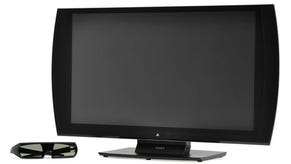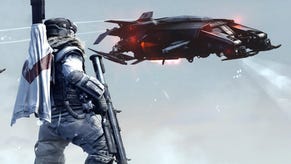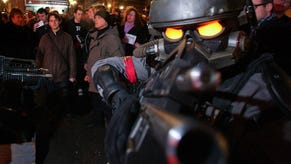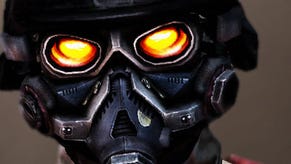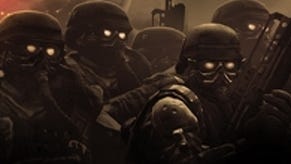The Making of Killzone 3
Guerrilla walks Digital Foundry through its latest technical miracle.
25th February, 2009: Killzone 2 has just shipped on PlayStation 3 and gamers are getting their first taste of what is - for its time - the most technologically advanced console shooter on the market. After five years in the making, the final version of Guerrilla Games' epic title is finally being enjoyed by gamers - and analysed by rival game developers anxious to see its state-of-the-art engine.
At its Netherlands HQ, the game's creators await the response and the process of carrying out the post-mortem on its own title commences. This is one of the most crucial elements of the game development process, especially for a franchise like Killzone, where pre-production on the next instalment will almost certainly have kicked off already.
"We take a very good look to the feedback we get from reviews, forums, fans and other studios," Technical director Michiel van der Leeuw tells Digital Foundry.
"We always do a pretty thorough analysis and then see what people comment on a lot, to see if there are recurring patterns. When that's done, we filter the feedback and bring it back in as input points for the next game. Some of the issues that we wanted to tackle were improving controls, getting more variety into the game (gameplay, environment, characters, etc), fixing any hiccups/glitches and improving storytelling."
External feedback on the game was also combined with comments, criticisms and suggestions from Sony's own internal teams. Since the release of the original PlayStation way back in 1994, the platform holder has gradually built up one of the largest portfolios of studios in the games industry, and when you have the developers behind titles of the calibre of Uncharted, WipEout, God of War and MotorStorm to hand, their feedback can be hugely valuable.
"There's a pretty good positive competition and sense of learning from each other between the Sony studios," confirms van der Leeuw.
"We were doing a studio tour right after we finished Killzone 2 to get inspiration from other studios and we often found people in other studios tearing apart a preview copy of Killzone 2 to see how we did. Those were great opportunities for other studios to feed off us, but also for them to give feedback."
As the team began to put together the outline for the sequel, ideas and concepts for features that couldn't be implemented into Killzone 2 due to time constraints were brought back into focus.
"I think the exclusion of a few things like a complete co-op campaign, big vehicles, on-rails sections and a few others were things we felt would stretch us too thin. They've been on our wish-list to master for a long time and the time just wasn't there yet for Killzone 2," van der Leeuw explains.
But as the project began to take shape it became clear that the developers would be going hell for leather in implementing all of these features, as well as improving the base rendering tech to accommodate a new look for the series.
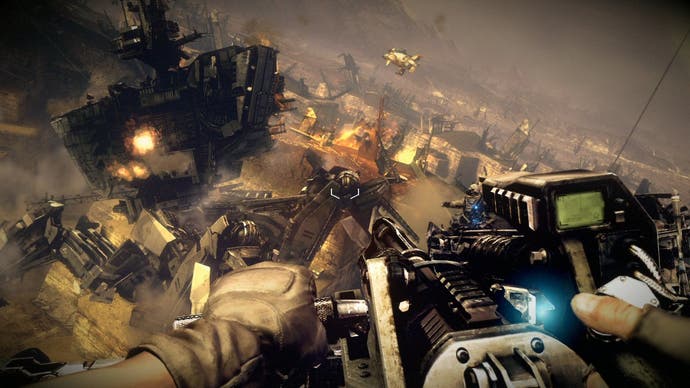

While still looking and feeling like a Killzone game, the new sequel saw the team moving in a new visual direction. The grunge and general "war is hell" murkiness of the last title was replaced with a much cleaner look, with design and effects that lent themselves to a more futuristic-looking game with a wider variation in the levels.
"This is largely an artistic direction, but there is some technology that played parts in it as well. There is a delicate balance in our colour pipeline, from what the artwork writes into the albedo buffer, to how it's lit and then how colour-correction deals with it," says van der Leeuw, referring to the internal lighting map that is a crucial part of Killzone's deferred rendering implementation.
"We were quite happy with the general look, but we also thought it was a bit too monochrome and it was very difficult to colour-correct properly. Together with the art director we worked on improving the algorithms that we use and improving our colour pipeline. We have specific hue controls at the end of the pipeline and preserve precision and colour better throughout."
While stablemate releases God of War III and Uncharted 2 both support (differing) implementations of high dynamic range rendering, Killzone 2 uses a 24-bit RGB framebuffer, which meant LDR lighting only. In previous presentations to the games industry, Guerrilla had discussed experiments using the Logluv colour space favoured by Naughty Dog, but the compromises in terms of blending and interpolation meant that the developer went with a refined version of its existing solution.
The existing buffers used in the deferred rendering setup were tweaked in order to give more dynamic range to the lighting and colour, or, as the developer puts it, "getting more bang for every bit in the buffer".
Thanks to rendering optimisations throughout the pipeline, the actual amounts of detail resolved in Killzone 3 were upped considerably in comparison with the existing game: texture resolution increased, environment and model detail levels went up a notch, and shader complexity increased. Other important elements in the engine also served to give the game a much cleaner appearance.
As discussed in our piece on the Killzone 3 multiplayer beta, Guerrilla went into production on the game knowing that it had the raw processing power available to create a much more ambitious sequel. Bearing in mind the technological accomplishments of Killzone 2, it's astonishing to think that the developer had around 40 per cent of the SPU processor cycles left available, and the developer got to work on making more use of the available resources.
"We've been doing a lot more stuff on SPUs this time around. One of the things we're very proud of is one that nobody sees: we're doing a full-depth rasterisation of tens of thousands of triangles in a software rasteriser on SPUs so we can do occlusion culling against it," van der Leeuw explains, revealing the process in which unnecessary polygons are removed from the equation, optimising the rendering process.
"This allows us to do much more aggressive culling, which in the end allows us to do more complex scenes and further draw distance. The work flow is also much nicer than what we had and it reduces the frame-rate spikes which were associated with the portal/occluder system we previously had."



